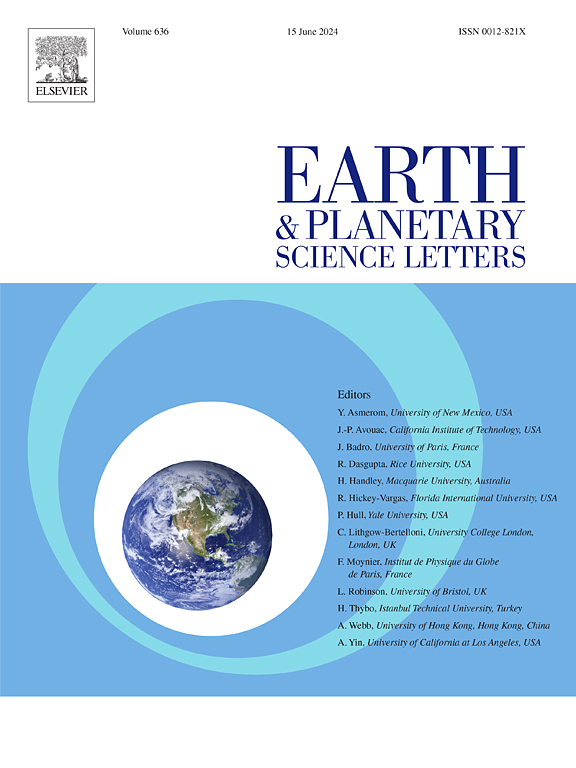How does the newly-formed drainage divide migrate after a river capture event?
IF 4.8
1区 地球科学
Q1 GEOCHEMISTRY & GEOPHYSICS
引用次数: 0
Abstract
Tectonic and climatic perturbations can drive drainage adjustment. A river capture event is usually a landmark shift in drainage evolution, which significantly changes the river network topology. Although these events can be identified through field observations and provenance analysis, reconstructing this evolution and pinpointing the capture timing remain challenging. Here, we provide a new way of determining capture timing via drainage divides, based on theory, numerical simulations, and two natural cases. Our theoretical studies show that the steady-state elevation of the captor and beheaded rivers will decrease and increase following a capture event, respectively. The newly-formed drainage divide that emerged between the beheaded river and capture point will have large cross-divide differences in steady-state elevation and erosion rate and thus migrates towards the beheaded-river side until reaching a new steady state (no cross-divide difference in steady-state elevation). Numerical simulations reproduce the characteristic phenomena of drainage-divide migration following capture events. We find that (1) the migration of newly-formed drainage divides after capture events may last for tens of millions of years, with the migration rate decreasing exponentially over time; (2) a larger captured area, higher uplift rate, or lower erosion coefficient may cause higher migration rate of the newly-formed drainage divide in the other same conditions. These insights from theoretical analysis and numerical simulations are further applied to the Dadu-Anning and Yarlung-Yigong capture events in the southeastern Tibet. We predict that the present Dadu-Anning drainage divide would further migrate ∼94–123 km southward to reach a steady state in tens of millions of years. The Yarlung-Yigong capture event occurred earlier, in the early-middle Cenozoic, because the newly-formed drainage divide has already reached a steady state.

求助全文
约1分钟内获得全文
求助全文
来源期刊

Earth and Planetary Science Letters
地学-地球化学与地球物理
CiteScore
10.30
自引率
5.70%
发文量
475
审稿时长
2.8 months
期刊介绍:
Earth and Planetary Science Letters (EPSL) is a leading journal for researchers across the entire Earth and planetary sciences community. It publishes concise, exciting, high-impact articles ("Letters") of broad interest. Its focus is on physical and chemical processes, the evolution and general properties of the Earth and planets - from their deep interiors to their atmospheres. EPSL also includes a Frontiers section, featuring invited high-profile synthesis articles by leading experts on timely topics to bring cutting-edge research to the wider community.
 求助内容:
求助内容: 应助结果提醒方式:
应助结果提醒方式:


